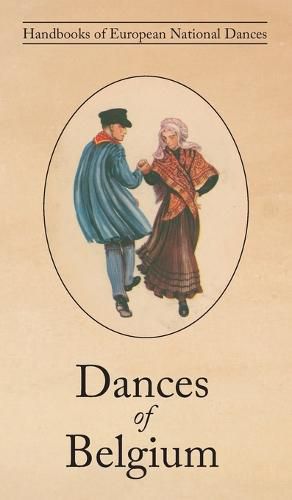Readings Newsletter
Become a Readings Member to make your shopping experience even easier.
Sign in or sign up for free!
You’re not far away from qualifying for FREE standard shipping within Australia
You’ve qualified for FREE standard shipping within Australia
The cart is loading…






This title is printed to order. This book may have been self-published. If so, we cannot guarantee the quality of the content. In the main most books will have gone through the editing process however some may not. We therefore suggest that you be aware of this before ordering this book. If in doubt check either the author or publisher’s details as we are unable to accept any returns unless they are faulty. Please contact us if you have any questions.
After a beribboned cock has been presented to the Mayor of certain Walloon towns the hapless bird is decapitated and the people dance around it - a strange, ritual ceremony, its analogue known also in the Pyrenees and in Spain. This and many another ancient custom has been kept alive throughout southern and eastern Belgium by the people’s great love of dancing - on the place, on platforms and in cafes. In Flanders, too, traditional dancing lives on. Her link with the past is seen, in particular, with the Sword Dances for which she was so famous. History records their performance in the picturesque city of Bruges as far back as 1389, and in the region of Antwerp men still dance ‘The Traweiteldans’ to the accompaniment of a drum roll.
M. Pinon was a folk song expert but was led to study folk dancing through insistent demands from all parts of the country. M. Jamar boasted twenty-five years’ study of his native Flanders. Like his collaborator he was a member of the Belgian National Commission on Folklore.
Their book contains music and step notations for five dances and there are, in addition, four coloured plates showing the correct costumes to be worn.
$9.00 standard shipping within Australia
FREE standard shipping within Australia for orders over $100.00
Express & International shipping calculated at checkout
This title is printed to order. This book may have been self-published. If so, we cannot guarantee the quality of the content. In the main most books will have gone through the editing process however some may not. We therefore suggest that you be aware of this before ordering this book. If in doubt check either the author or publisher’s details as we are unable to accept any returns unless they are faulty. Please contact us if you have any questions.
After a beribboned cock has been presented to the Mayor of certain Walloon towns the hapless bird is decapitated and the people dance around it - a strange, ritual ceremony, its analogue known also in the Pyrenees and in Spain. This and many another ancient custom has been kept alive throughout southern and eastern Belgium by the people’s great love of dancing - on the place, on platforms and in cafes. In Flanders, too, traditional dancing lives on. Her link with the past is seen, in particular, with the Sword Dances for which she was so famous. History records their performance in the picturesque city of Bruges as far back as 1389, and in the region of Antwerp men still dance ‘The Traweiteldans’ to the accompaniment of a drum roll.
M. Pinon was a folk song expert but was led to study folk dancing through insistent demands from all parts of the country. M. Jamar boasted twenty-five years’ study of his native Flanders. Like his collaborator he was a member of the Belgian National Commission on Folklore.
Their book contains music and step notations for five dances and there are, in addition, four coloured plates showing the correct costumes to be worn.